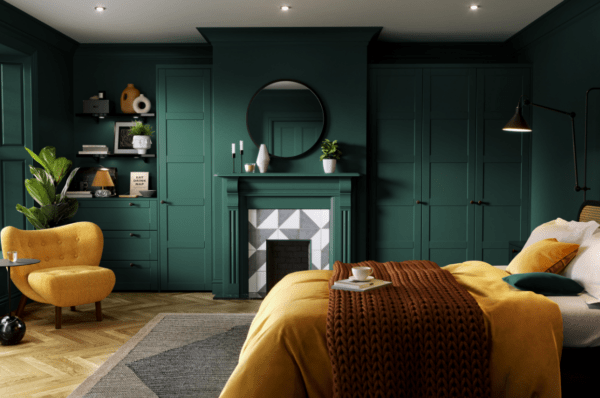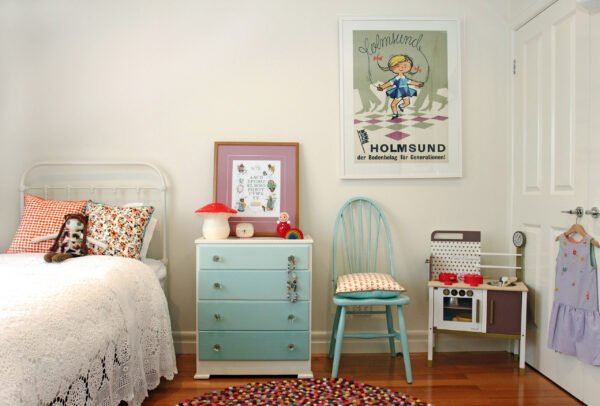
How Your Home Impacts Wellbeing and How to Elevate the Space
The most common words used by tenants to describe furniture in rented, furnished accommodation were: ‘cheap’ and ‘bland’

The UK property rental market is booming, with a recent study revealing that almost a fifth of UK homes in 2024 are privately rented. Many renters opt for the ease and convenience of furnished accommodation, however this comes at a cost as almost three-quarters (73%) of tenants want to change their furniture – describing it as ‘cheap’,’ bland’ or ‘run-down’.
In a new study conducted by furniture retailer MADE, it turns out the impact isn’t just financial; it can also affect tenants’ psychological comfort and their ability to relax in their own home.
MADE has teamed up with clinical psychologist, Melody Smith, to explain how a well-decorated home can reduce stress levels and improve overall well-being. While MADE’s Head of Design, Ali Edwards explains how renters and home-owners alike can elevate a home to achieve a more balanced and harmonious space.
Ali encourages tenants to: “view [bland furniture] as a blank-canvas opportunity – to modernise or maximise those pieces through colourful accessories or clever space-saving solutions. You can also get creative with decorative elements like throws, cushions, rugs, and books.”
A well-decorated home can reduce stress and promote feelings of tranquillity
According to Melody, it’s important to personalise your home as “a well-decorated space can influence mood through aesthetic appeal; for example, a clutter-free, harmonious environment can reduce stress and promote feelings of tranquillity.
“This process of making a house a home is sometimes known as ‘place attachment’, and involves creating an emotional bond with a space that promotes feelings of safety, comfort, and belonging. By personalising a rented space, people can experience increased satisfaction and a sense of identity within their home environment.
“Environmental psychology suggests that colours, layout, and personal items in home décor can evoke specific emotional responses. Calm colours like blue and green can create a soothing environment, while personal items can make a space feel more secure and uplifting.”
Psychologists top 5 tips to promote psychological comfort through interior choices:
Melody recommends focusing on the following factors:
- Create designated areas for relaxation, work, and socialising to help facilitate a balanced lifestyle.
- Choose soothing or personally pleasing colours.
- Physical comfort is crucial to achieve psychological comfort.
- Incorporate natural elements like plants or water features, which have been shown to reduce stress and enhance mood.
- Try to create a layout that allows for natural light and easy movement.
Design expert on how to elevate uninspiring landlord owned furniture:
The study found that nearly three-fifths (58%) of tenants find it difficult to make their space feel like their own. Therefore, Ali has shared her advice on elevating lacklustre furniture, explaining how to incorporate soothing colours and ensure physical comfort in the home:
“Functionality is crucial when it comes to furnishing a home, and investing in durable and easy-to-use products that stand the test of time is essential.”
“Great design is equally important, as shown by the enduring popularity of design classics in our homes. Investing in furniture pieces that are built to stand the test of time is integral. It’s about furniture that moves with you, rather than poorly-made pieces you need to replace.”
“If you are renting a pre-furnished property, there are still many ways to enhance your space. Instead of viewing bland furniture as a limitation, consider it a blank canvas to modernise or maximise those pieces through colourful accessories or clever space-saving solutions. You can also get creative with decorative elements like throws, cushions, rugs, and books.”
“When adding colour or texture to a space, consider the colours already in the space, and the hues you can add to complement the existing theme. If the current theme leans towards minimalist tones such as white, grey, or cream, think about areas where you can introduce bursts of colour or texture to create depth.”
“You can also maximise your space by incorporating statement pieces such as floor lamps or shelving units, and existing furniture can be elevated by adding visually appealing trays, candles or patterned tablecloths. Even something as simple as adding a wicker basket or a colourful storage box to an uninspiring TV stand can significantly enhance its appearance.”
Embrace zoning in open-plan apartments:
According to Melody, having designated areas for relaxation, work and socialising helps achieve a balanced lifestyle, Ali explains how to execute this in an open-plan home: “Try to create clear zones between the spaces. For the living room, place your sofa on a large rug and angle it away from the kitchen to create a sense of separation.
“If you have a separate dining table, positioning it on a rug will allow it to have its own space, and switching up the colour scheme between each area can help create clear zoning. Consider using contrasting colour schemes for each designated area to establish a distinct visual appeal. Vibrant hues in the kitchen or dining space can invigorate the atmosphere, while softer tones in the living room can enhance a sense of tranquillity and comfort.”
Browse MADE’s wide range of unique table lamps, rugs, and accent chairs.















































